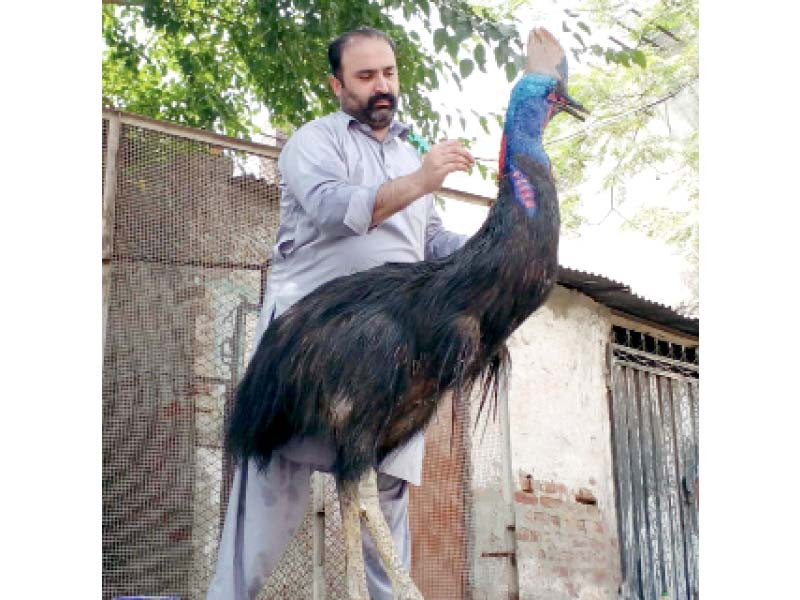Embalmed and breathless, the cassowary is now ready to greet park-goers once again

Dubbed as the dinosaurs of the bird world, cassowaries are a species native to Northern Australia, New Guinea, and surrounding islands. Weighing in at close to 150 pounds and stretching to almost six feet at full height, the exotic bird is known to stand on powerful reptilian legs that can not only leap at lightning fast speed but also send potential threats flying with one swift blow.However, owing to habitat loss, these magnificent creatures have found themselves vulnerable to endangerment in recent times, with a significant population being reared in captivity around the world.
The one homed at Lahore Zoo, had remained a chief-attraction for the park’s visitors for over half a century; charming all who came with its brilliant blue visage and a horn-like crest that sat on its head like a crown on royalty. Per zoo records, the big, black bird had been brought from England in October of 1971, when only eight years old. It died in March of 2021, aged 58, after making its mark as the park’s oldest bird. But that was not the last of last of the Lahore Zoo’s iconic feathered friend. It was due for a comeback, albeit in still life.
“We preserve our rarest animals and those that have an eminent presence at the Zoo, so that their legacy continues to live beyond them,” said Zoo Director Mohammad Anwarman. “This gives our visitors an opportunity to learn about this magnificent creature even when they are no longer here,” he added.
Upon the Zoo’s approval to embalm its senior-most bird, it was the service of a taxidermist that were sought, for which local artist Mohammad Jahangir Jadoon was summoned. Talking about his process, Jadoon, who’s been associated with taxidermy for the past 17-years, said that the skill has been part of his family for generations. Speaking further, the taxidermist shared that when a rare animal or bird dies in a government zoo, it is immediately sent for a post-mortem. There was no damage to the cassowary’s skin since it died naturally of old age, which made it a model subject for preservation. Next, the skin had to be hallowed, coated with various embalming chemicals, inserted with a steel frame and filled with stuffing. “But like most animals, a lot of the bird’s original pigmentation had started to fade after death. Therefore, there was a lot of artificial colouring which was needed on various parts of the body,” the taxidermist shared.
Big birds can usually take up to 15 days to embalm, stuff and paint, which can cost anywhere between Rs Rs 50,000 to Rs 80,000 depending on the material quality. But the cassowary taxidermy which required extensive detailing by hand, was prepared over the course of a month. “The process is much quicker in other countries, where the art of taxidermy is significantly mechanised.
Yet, the black-bird taxidermy, our latest, has been a labour of love, which is now finally ready to relive beyond its years,” Jadoon told The Express Tribune.
